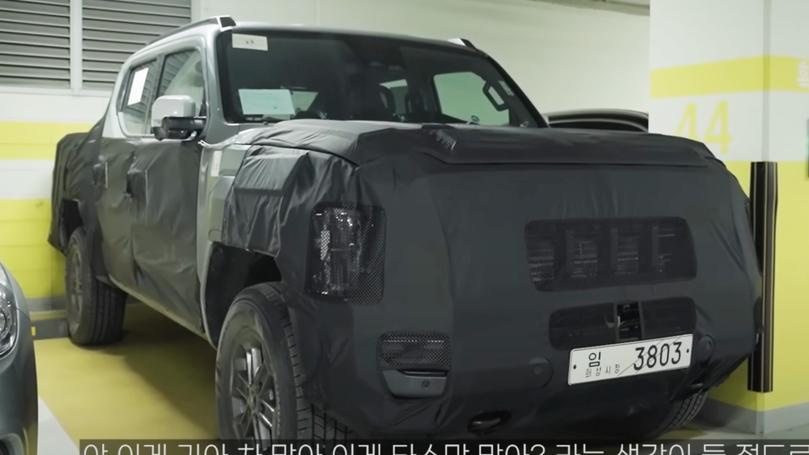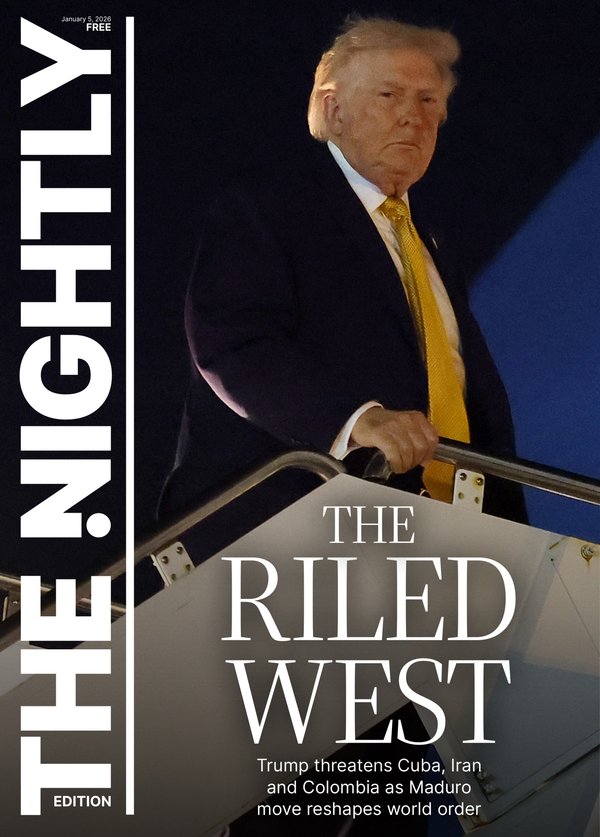Kia’s Aussie ute targets nation’s love of gas-guzzling trucks

As global automakers pivot to electrify their fleets, South Korea’s Kia has gone against the grain by unveiling its first ute — a diesel model designed specifically for the Australian market.
The move is testament to Australians’ abiding love for hardy off-roaders and is another sign of just how difficult it will be to wean the country off gas-guzzling vehicles.
Last month, Kia released a teaser trailer for the ute, with some of Australia’s most-loved sports stars — including tennis champion Ash Barty, around-the-world sailor Jessica Watson, AFL legend Buddy Franklin, Matilda’s goalkeeper Mackenzie Arnold and cricketer Steve Waugh — arguing the vehicle should be named after them.
Sign up to The Nightly's newsletters.
Get the first look at the digital newspaper, curated daily stories and breaking headlines delivered to your inbox.
By continuing you agree to our Terms and Privacy Policy.In a follow-up trailer released Thursday, the ute’s rightful name was confirmed — the Kia Tasman.
The moniker is a nod to the Tasman sea between Australia and New Zealand, evoking the rugged region that inspired much of the ute’s specifications. Kia called it the “most Australian Kia yet” in a statement, confirming it to be their first product given an Aussie-inspired name.
The new model will be entering a crowded market. Dual-cab utes are the most popular cars in Australia, with Ford’s Ranger, Toyota’s HiLux and Isuzu’s D-Max filling the top three spots last year.
“We logically felt that the next step in our growth and our presence in the Australian landscape was to add the product that most Australians are driving,” Roland Rivero, general manager of product planning at Kia Australia, said.
Still, “it was a difficult process of convincing our headquarters to give it to us”, given the industry’s move toward electrification, he added.
Kia is hoping to capture 10 per cent of the Australian light-commercial vehicle market with the Tasman, setting an annual sales target of 20,000 units, a modest goal compared to the Ranger’s and Hilux’s sales, which each topped 60,000 last year.
“It’s obviously going to be very tough, we’ve got very established competitors that have been doing this for decades,” Mr Rivero said. However, “there’s definitely an opportunity there to try and convert some of those customers looking at the existing ute competitors.”
The Tasman’s high-quality specifications and market-leading seven-year, unlimited kilometre warranty will be strong selling points, he said.
To bolster its credentials as a workhorse utility vehicle, the Tasman will sport a 3.5-tonne towing capacity, a payload of at least one tonne, and ANCAP safety certification that will allow it to break into the lucrative fleet market. The vehicle will appeal to customers looking to “buy a ute, use it as a tool of the trade Monday to Friday, and on the weekend it’s a family vehicle similar to an SUV”.
The Tasman will also be sold in the Middle East, South Africa, South America and parts of Asia, but Australia is clearly the focal point.
“We’ve never had a product that has had this level of engineers coming to Australia to tailor the product for our market,” Mr Rivero said.
The launch of a new diesel ute tailored for Australian tastes and conditions is another sign the road to electrifying the nation’s vehicle fleet is likely to be long and slow.
While electric vehicle sales are increasing in Australia, they’re coming off a low base. EVs accounted for 9.5 per cent of new car sales last month, up from 6.8 per cent a year earlier.
In another blow to the take up of EVs, the government last month watered down proposed vehicle emission standards. As part of the changes, it adjusted emissions limits for heavier cars, such as the Ranger and HiLux, while some popular four-wheel drives — such as the Toyota Landcruiser and Nissan Patrol — will be classified as light commercial vehicles rather than passenger cars, allowing them to pump out more emissions.
“A fuel efficiency standard is long overdue,” Tony Weber, chief executive of the Federal Chamber of Automotive Industries said in a statement last week.
“However, we remain concerned at the speed and magnitude of the change for both manufacturers and more importantly, consumers.”
Apart from Australia, Russia is the only other developed economy without fuel emissions standards. That has limited the range of electric cars available in Australia as carmakers direct EVs to countries where they have to meet tougher emissions rules.
Under the updated standards, Kia’s new ute will face fewer penalties on the emissions it produces because of its classification as a light commercial vehicle. Kia also offers a range of EVs and hybrids in Australia, including the all-electric EV9, and the Niro, which also comes as a hybrid.
“The whole world can’t morph into electrification immediately,” said Kia’s Rivero, adding that Australia’s tradespeople, farmers and miners won’t be making the switch to EVs any time soon.
Bloomberg
Originally published as Kia’s Aussie ute targets nation’s love of gas-guzzling trucks
